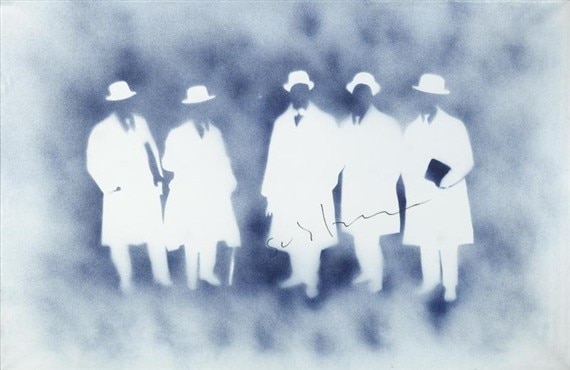On September 20th, ninety years ago, in a sunny Homs, Mario Schifano was born. An artist, a catalyst, an eye through which the images of modernity were deconstructed into a thousand shades, sometimes bold, sometimes provocative, but always authentic. His art was a constant dialogue with the world around him, an endless flow of colors and sensations captured on the fly and returned to the canvas with the immediacy of a flash.
Pop Art, advertising, cinema, television: everything that shaped the collective imagination of the 1960s and 1970s found a home in his works, reinterpreted and transfigured with a unique sensitivity, almost a trademark. Schifano did not simply reproduce reality; he filtered it through his personal magnifying glass, shaping a parallel universe where the ordinary was elevated to the extraordinary, and the mundane became iconic.

A game, indeed, but a game that transforms into a deep reflection on the human condition, on the alienation of the individual in mass society, on the transience of existence in the face of the inexorable passage of time. A thorny, irreverent, at times even scandalous artist. Yet, it was precisely his restlessness, his unquenchable thirst for experimentation, and his categorical refusal of any compromise that fueled his art.
Schifano did not simply reproduce reality; he filtered it through his personal magnifying glass, shaping a parallel universe where the ordinary was elevated to the extraordinary, and the mundane became iconic.
Schifano’s Coca-Cola works, far from being simple reproductions of the well-known brand, are epiphanies of the everyday object elevated to a pop icon. A dissection, a deconstruction, with graphic signs that amplify its evocative power.

The surface of the canvas becomes a battlefield where painting clashes with advertising, art interacts with consumerism, and the pictorial gesture confronts technical reproducibility. With his irreverent irony, Schifano makes us look with new eyes at a banal object, recognize its symbolic charge, and question its role in consumer society.

‘Open’ works, constantly evolving, like the reality they represent. Schifano paints the canvas with quick, dripping brushstrokes, adding collages, and handwritten words that create a layering of meanings that overlap and intersect. The work thus becomes a palimpsest of memory, an archive of images and sensations that accumulate over time. These pieces transform into a reflection on contemporaneity, on the pervasiveness of media, the homogenization of tastes, and the loss of the aura of the artwork. But can art, when confronted with the banality of the everyday, continue to be a tool for knowledge, critique, and transformation?
Painting ‘is human, too human.’ (Mario Schifano)
Opening image: Mario Schifano, Coca cola (Tutto), 1972


